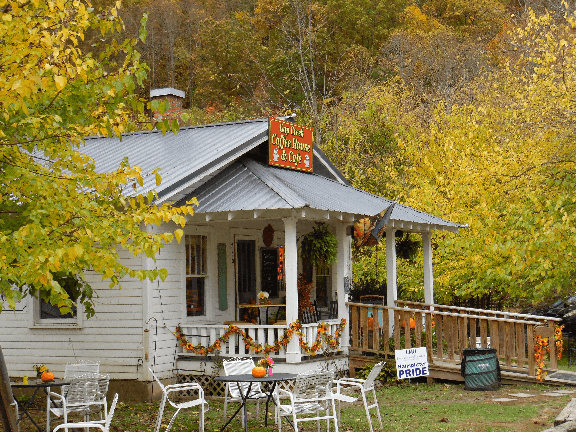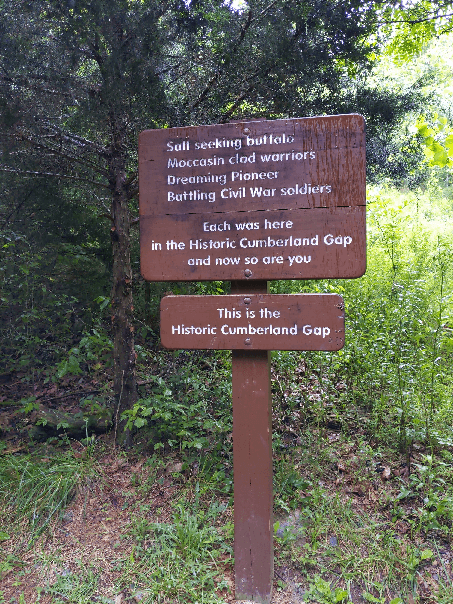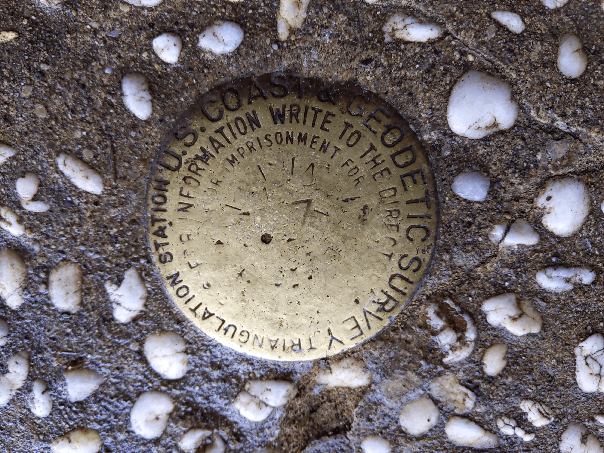On Atma’s maiden voyage, I parked the van in Santa Margarita, California to survey rock piles upon which artists had scratched, scrawled, and painted pictographs en plein air over 4,000 years ago1Way before the 19th century, when the French took a notion to escape the studio and paint en plein air; I parked the van in southern New Mexico on a lot next to Carlsbad Caverns, found the gaping opening that spiraled down in sweeping circles to the cold pit of an enormous cave. It had stalagmites, it had stalactites, its walls wept with a milk white substance like the glaze on Krispy Kreme doughnuts. It had elevators to haul people back up to the top. It had bats. It was a cave’s cave. And it was undeniably cavernous. The long twisting descent made it was easy to imagine Dante’s journey through the fiery rings of the Inferno. All the Caverns lacked was a Virgil and tortured souls2Where was Dick Cheney, when you needed him?.
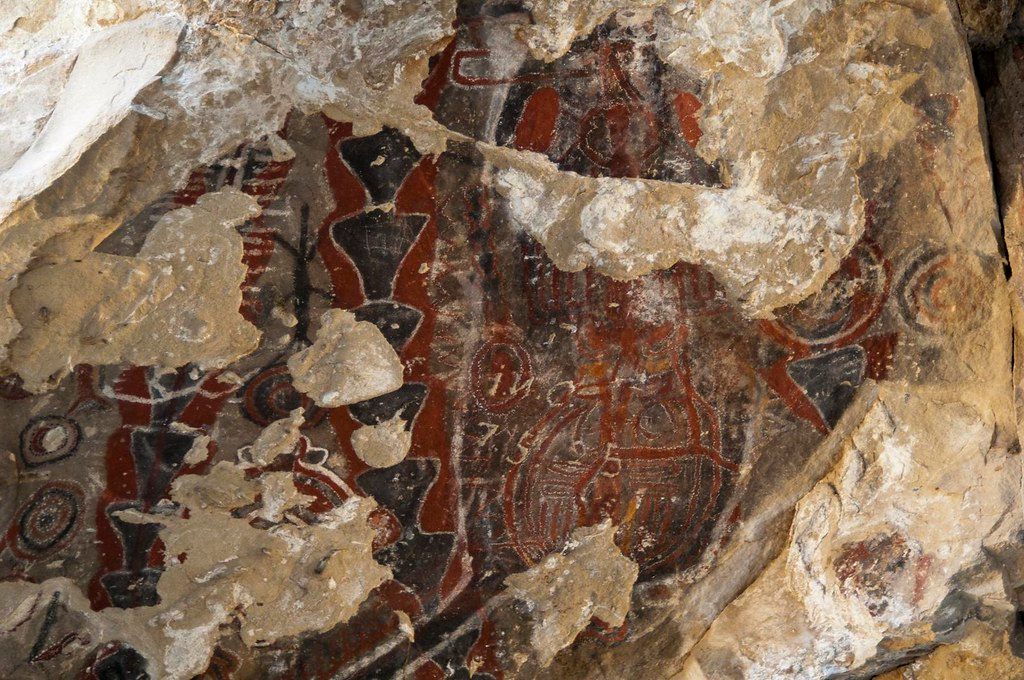
I parked the van in Arizona among Saguaro3A Youtube guide to pronouncing this word: https://www.youtube.com/watch?v=ThfqfKu790I cacti and the arid splendor of the Sonoran Desert.

I parked the van outside of Austin, Texas on a side-trip to the Longhorn Cavern State Park before turning toward my final destination in Houston. As I approached the park, I noticed a turn-out to a scenic view and vowed to check it out on the return.
The entrance to the cave itself was shrine-like and spectacular, a nature-made atrium of boulders weathered smooth over an impossibly vast period of time. I shrank from the chance to explore the cave on the excuse that I would come back and bring a friend. Or maybe I just knew, though I was in Texas, there was no way this cave was going to match up with Carlsbad Caverns.
I drove back to the turn-out that promised a scenic view. The best spot to access the view was in the fat center of an elliptical loop at the end of a short drive, past a stand of brush and trees. It was desolate with an air of abandonment and neglect, a place where you could shoot holes in a can setting on a stump and no one would care. On the return side of the loop was a car pulled completely off the road into rough grass. I thought whoever came along with that car was up to no good. The view stretched out over a valley to distant hills with an easy, self-satisfied bucolic splendor. Hill country.
I fiddled around getting Atma parked off of the road so the sliding door on the passenger side would open up over the vista. As I circled around the van to get to a steel garbage can and its chained lid, a disembodied voice rose out from the vicinity of that car. It was a man’s voice, and he was saying that he couldn’t move and needed help.
I decided immediately that there was a fifty percent chance that this guy really needed help and the other fifty percent was that this was a setup and the guy or a few of his buddies lurking nearby were armed with guns. Still, it seemed like bad form to refuse a person help when he asked for it so plainly. I decided to circle around his car so I would come up on him from behind and get a look inside on my approach.
“I’ve got a bad back and I need my paints from the back seat,” he said, flicking his head in that direction. It was a four door. He sat with his legs flung out from the driver’s seat. I was going to have to open the door behind him to fetch him his paints. I felt uneasy still. I wasn’t yet sure what I might find.
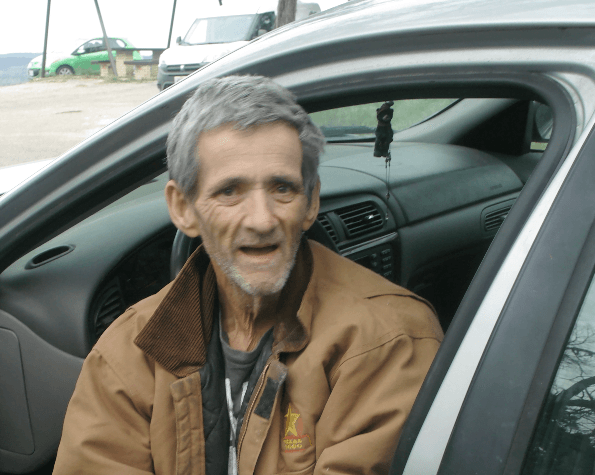
“I’m Tommy. I come up here every day. I drove all the way out here from Myrtle Beach, Florida to be with my husband. He’s the only man I trust. It’s a long way to go in a condition like this. See that tree over there. I come up here every day to paint that tree. I talk to that tree. And you know what? The tree talks back. I know I’m crazy. Don’t let me scare you because I’m crazy. I’m a painter. I paint signs and sometimes take along a helper to carry my supplies.”
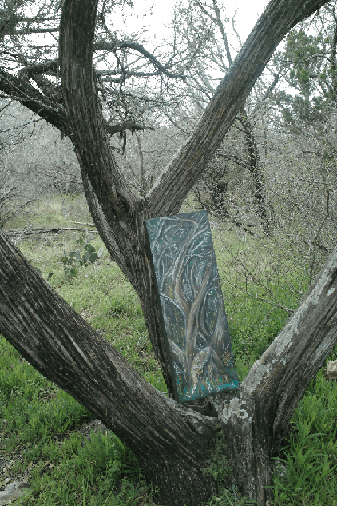
I seized on the idea that Tommy painted signs, maybe houses too, to fund his artistic study of this tree. I didn’t know exactly what kind of painter Tommy thought himself just that he came out to paint this one particular tree. It wasn’t a mighty oak or a redwood. Its trunk splayed out at its base into three separate trunks, each as big as a big man’s thigh. It stood in among a stand of others. Its tripartite trunk must have caught Tommy’s eye. Whatever the reason, it was the tree that spoke to Tommy.
Then he showed me his current rendition of it, stretched in a frame on a long, skinny canvas. It was a lot like a Van Gogh with the shape of the tree described in vertical lines made luminescent and wavy by a mysterious internal source of electricity.
Next he got me to pull out a photo album from the passenger footwell in the back of his car. It was his portfolio and contained plastic-sleeved photographs of paintings and murals which beatified everyday people and gave most of them angel wings apparently to enjoy the Southwestern grace of a non-denominational Spanish mission and hover about its stony well.
“One time a man come up to me outside a little place I had where I kept my supplies and hit me over the head with a pipe,” he said.
“That’s the reason I’m all bent up like this. He destroyed the nerves. It’s why I can barely walk. It took a lot of surgeries to put me back together. And you know what? I knew that man. It was a fellow who used to come help me out. A long time after I got out of the hospital, I remembered his face and knew who he was.”
“Did you confront your attacker?” I asked him. I felt like I already knew Tommy well enough to guess the answer.
“Yes, I did. I asked him why he did it. And you know what he told me? He said he needed $500 to pay a gambling debt. And I said, ’man, you should have told me. You know, I would have given you that $500. You didn’t have to do that. He said he was sorry.”
I marveled at Tommy for having no hint of resentment in his story, neither in the words he chose or the timbre of his voice, even though the guy who attacked him had left him unconscious and crippled for life. Tommy could still walk but just barely. It was vital but also a courageous feat for him to stand-up from time-to-time so he could walk a few paces to keep from getting stiff.
Then, I asked him if he had forgiven the man who had crippled him. I felt like I knew the answer to that too.
“Yes, I did,” he said.
For Tommy, I think it is fair to say that, wherever he is now, life’s been good. Out of sheer force of a kind spirit, life’s been good. And if life’s been good for Tommy, I reckon the chances are life’s been pretty good for us too4An earlier version of this story appeared in Ode to the Adventure Prone.
Footnotes
- 1Way before the 19th century, when the French took a notion to escape the studio and paint en plein air
- 2Where was Dick Cheney, when you needed him?
- 3A Youtube guide to pronouncing this word: https://www.youtube.com/watch?v=ThfqfKu790I
- 4An earlier version of this story appeared in Ode to the Adventure Prone

